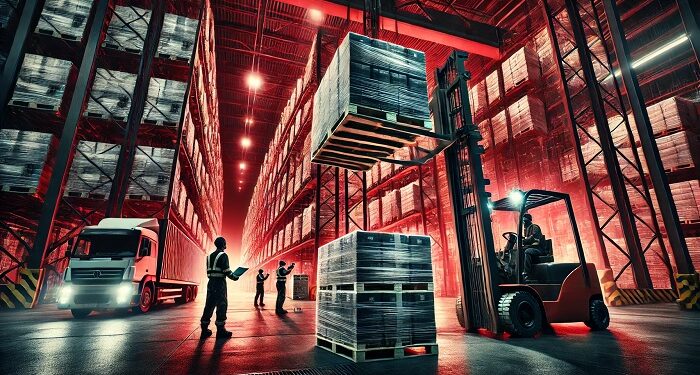In today’s fast-paced logistics industry, efficiency is the key to success. Businesses operating in the USA rely on cross-docking to reduce storage costs, minimize handling time, and streamline supply chains. However, one crucial factor that ensures seamless cargo movement is restacking—a process that optimizes freight arrangement to prevent damage, improve load stability, and maximize shipping efficiency.
Whether dealing with retail distribution, food logistics, or industrial freight, restacking services play a vital role in keeping operations smooth and cost-effective.
What is Restacking in Cross-Docking?
Restacking is the process of rearranging and securing cargo to enhance stability, ensure compliance, and optimize space utilization. In cross docking where shipments are swiftly transferred between transportation modes, proper restacking prevents cargo from shifting, reducing the risk of damage and improving overall freight efficiency.
For businesses across the USA, integrating restacking services into their logistics operations means fewer damaged goods, better space optimization, and faster delivery times.
The Benefits of Restacking in Cross Docking
- Enhanced Cargo Stability
Freight that is improperly stacked can shift during transit, causing damage or delays. Restacking ensures that loads remain stable, reducing the likelihood of product loss. - Better Space Utilization
By strategically arranging cargo, restacking services help maximize the use of available truck and container space, leading to cost savings on freight expenses. - Minimized Product Damage
Fragile, perishable, or high-value goods require careful handling. Restacking protects shipments from unnecessary movement and prevents potential losses. - Improved Supply Chain Efficiency
Properly organized shipments allow for quicker handling in cross-docking facilities, reducing turnaround times and increasing operational efficiency. - Regulatory Compliance
Many freight regulations require specific load distribution and weight balance. Restacking ensures that all shipments meet compliance standards, preventing penalties and shipment refusals.
Restacking: A Critical Component of Cross Docking in the USA
Cross-docking facilities are designed to minimize storage time by transferring goods from inbound to outbound transportation as quickly as possible. Without proper restacking, misaligned or unsecured shipments can slow down this process, leading to delays and inefficiencies.
Industries that depend on restacking include:
- Retail & E-commerce: Ensuring large-volume shipments remain compact and organized.
- Automotive & Heavy Equipment: Preventing load imbalances in bulky shipments.
- Food & Beverage: Securing perishable goods to avoid spoilage.
- Healthcare & Pharmaceuticals: Protecting sensitive medical supplies from damage.
With professional restacking services, businesses can ensure that every shipment is optimized for safe and efficient transportation.
Why Choose a Professional Restacking Service?
While some companies attempt to handle restacking in-house, professional restacking services provide significant advantages. With trained experts, specialized equipment, and compliance knowledge, logistics providers ensure that every load is secured and optimized.
FreightBox.pro, a leader in logistics solutions, offers advanced restacking services to help businesses improve efficiency, reduce costs, and enhance supply chain performance. With a commitment to Smart Spaces for Your Supply Chain, FreightBox ensures that every load is handled with precision, maximizing space and minimizing risk.
Conclusion
In the world of logistics, restacking is a game-changer for businesses using cross-docking. From optimizing load stability and reducing freight damage to improving efficiency and ensuring compliance, restacking services provide essential support for supply chain success.
For companies across the USA, investing in professional restacking is a strategic move toward cost-effective, damage-free, and streamlined freight handling. Partnering with FreightBox ensures that every shipment remains secure, optimized, and ready for efficient transit.















